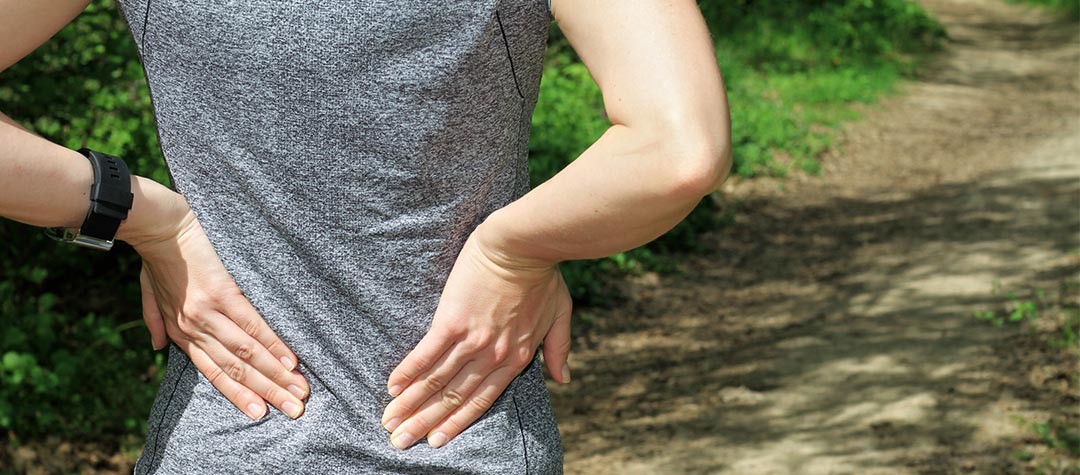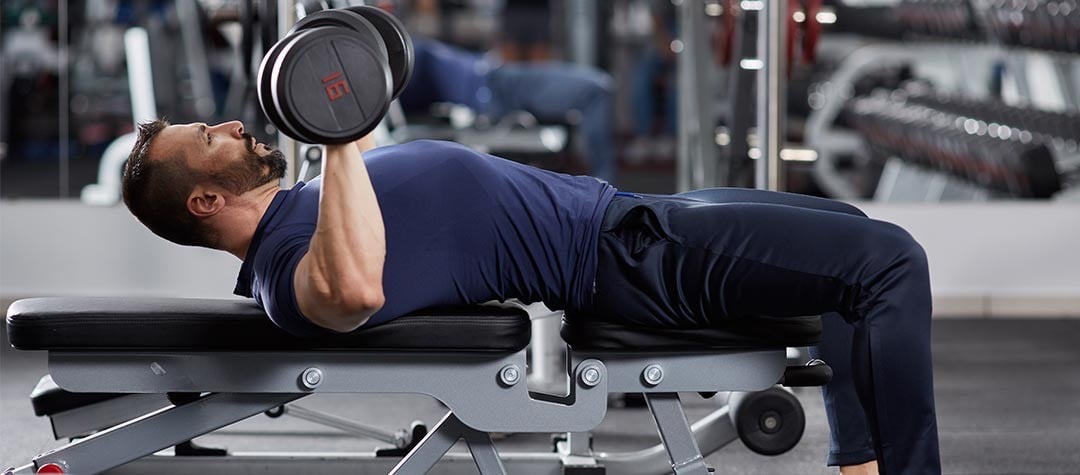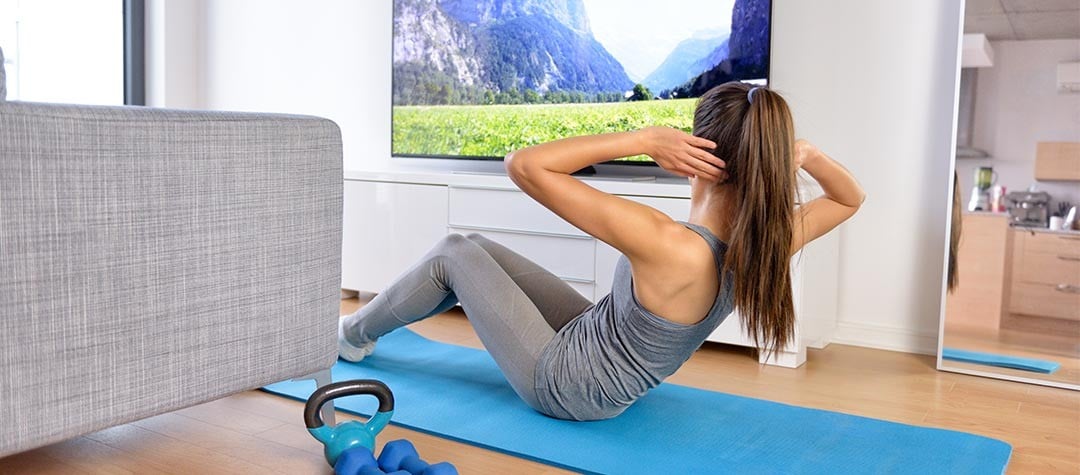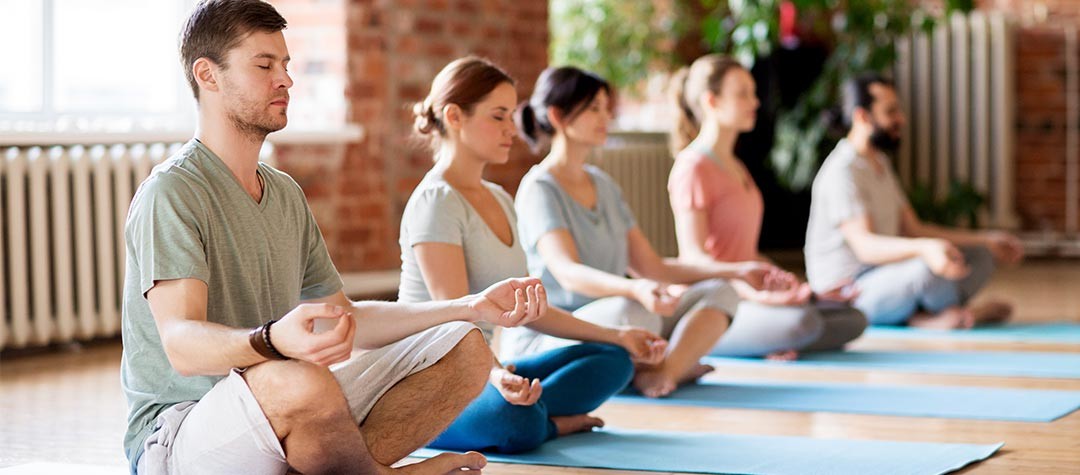Injuring your back while exercising is a common, but usually avoidable injury. Whatever sport you pursue, by taking a few precautionary measures, you can do your best to ensure that your back stays injury-free.
How do you pick up an object from the floor?
(a) Do you lean forward from the hips, rounding your spine towards the floor until you can reach the object with your hand?
(b) Keep an upright upper body and bend at the knees, squatting down until you can reach the object, using the large strong muscles of the thighs to control your movement?
If you answered (a) to the question above, you’re like the vast majority of people, who ‘save their legs’ and use their back to take the strain. And taking the strain is exactly what your back does with that bending movement. By rounding the spine as you lean forward, you place tremendous stress upon your lower back which can easily lead to a ‘slipped disk’. The correct way to retrieve an object from the floor is (b), which ensures that this most important region of your body is not subjected to unnecessary and potentially damaging loading.
Back pain is very common and if you have been unfortunate enough to experience it, you will know that it is extremely debilitating. Back injuries and associated problems cause nearly 5,000,000 working days to be lost each year, a huge number of which can be avoided by following simple exercise and movement protocols to ensure that this primary area of the body is strong and protected.
Watch your back while exercising .... a complicated structure
Your spine is a very complex structure, composed of 33 bones (vertebrae), which are surrounded and supported by over 400 muscles. Your spine and back should be like a strong, flexible cable but it is often the weak link in the body due to one or more of the following conditions:
-
Poor posture.
-
General back muscle weakness.
-
Undeveloped abdominal muscles.
-
Insufficient core strength.
-
Muscle imbalances.
-
Incorrect lifting technique.
-
Lifestyle problems.
Build your back to prevent injury while exercising
To help prevent back problems, there are some simple steps that you can take to strengthen this important area.
Poor posture is a key contributor to back pain, imbalances and weakness because it has a continuous effect throughout the day. Whether you are walking, sitting or moving in any way, all the time that you are awake, you can help strengthen your back.
-
Focus on walking upright with your shoulders back, stomach held in and head erect.
-
Avoid slouching across a desk or on a sofa at home.
-
When standing, avoid distributing your weight onto one hip which initiates curvature of the spine. Instead, stand with both feet flat on the floor, legs straight, completely upright.
To help you focus on maintaining good posture, imagine that there is a hook attached to the top of your head, pulling you up towards the ceiling whenever you walk. Think of walking with a tall, relaxed posture, rather than being hunched over.
Don’t just train your mirror muscles
It is common when exercising to train the muscle groups that can be seen in the mirror. Looking at the upper body, the favorites are the chest and stomach. However, if the opposing muscle groups, (i.e. their counterparts in your back) are ignored, imbalances and weaknesses can occur. Hence, it is important to exercise the lower and upper back at just the same intensity.
Work your core
Every woman who has had a baby will tell you that in the latter stages of pregnancy, they suffered from back pain. The reason for this is because the growing baby stretches and weakens the mother’s abdominal muscles, resulting in excessive curvature of the lower spine and considerable back discomfort. If your stomach muscles are at all weak, then on a smaller scale, you are replicating the problems that a mother experiences when pregnant, resulting in lower back pain. By keeping your stomach muscles well toned, you help negate this effect.
Your core muscles are deep postural muscles that run right around your abdomen, rather like a corset. They hold you in, help keep you upright and provide all-round back strength and training your core muscles is absolutely key to building your back.
Keep balanced If your work, sport or other activities are very focused on exercising only one side of our body, your spine can be laterally twisted, creating imbalances and constant twisting forces that can stress your spine and back muscles.
For example: a tennis player or golfer invariably has considerable body imbalances. The tennis player will be much stronger at the shoulder, arm and across the entire region of the racket side and the golfer trains their body to only ever hit the ball to either the left or right, never both. To counteract this imbalance, they should focus on exercising the muscle groups on the opposite side, which will help keep the back and spine in alignment.
Lift with your legs
Your leg muscles are the strongest in your body and by utilizing them when you need to bend up and down, you will avoid dangerously stressing your back. Always carry a load close to your body and seek assistance so that you never compromise your body position to move or lift an object.
Common 21st Century problems
Nowadays, our lives can be extremely sedentary, through increased car and computer usage and generally lower levels of activity. One of the effects of this culture is that our muscles are less able to cope with supporting our bodies, simply because for long periods of inactivity, they don’t have to. To counteract these problems, try a few of the following ideas to get active:
-
Incorporate higher levels of activity into your day.
-
Take breaks from the computer.
-
Get active at lunchtime.
-
Introduce more walking on your journey to work.
-
Position your PC monitor at a height that forces you to sit upright to view it correctly.
Back in style ...
Ensuring that your back is strong needn’t take huge chunks out of your week and time spent on integrating simple exercises and movement patterns will be time well spent. By going back to basics, you can be sure that you are taking positive steps to safeguarding your key supporting structure and you won’t add to the statistic of five million working days lost each year!














